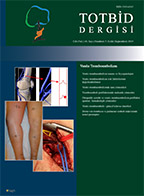
Venous thromboembolism (VTE) is a potential fatal disease with an annual incidence of 0.1–0.3% in the adult population, including deep vein thrombosis (DVT) and pulmonary thromboembolism (PTE). The mortality rate within 1 month is 6% for DVT patients and 12% for PTE patients after diagnosis. Therefore, VTE is the most important cause of hospital morbidity and mortality if no measures are taken. DVT occurs in 40% to 60% of patients without prophylaxis after major orthopedic surgery. There are many risk factors for VTE and recurrent VTE. While most hospitalized patients have at least one risk factor for VTE, 40% of these patients have three or more risk factors. Hip fractures, knee and hip arthroplasties, known as major orthopedic surgeries, have a high risk of VTE. In addition to major orthopedic surgeries, there may be additional clinical risks identified for a specific patient (age, weight, smoking, genetic thrombophilias, VTE history). Therefore, VTE and bleeding risk analysis should be performed separately for each patient. Various scoring methods and guidelines can guide us in the evaluation of risk factors. The way of protection from DVT and fatal pulmonary embolism is through the application of patient-specific prophylaxis treatment as a result of good evaluation of patients with VTE risk factors and bleeding risks.